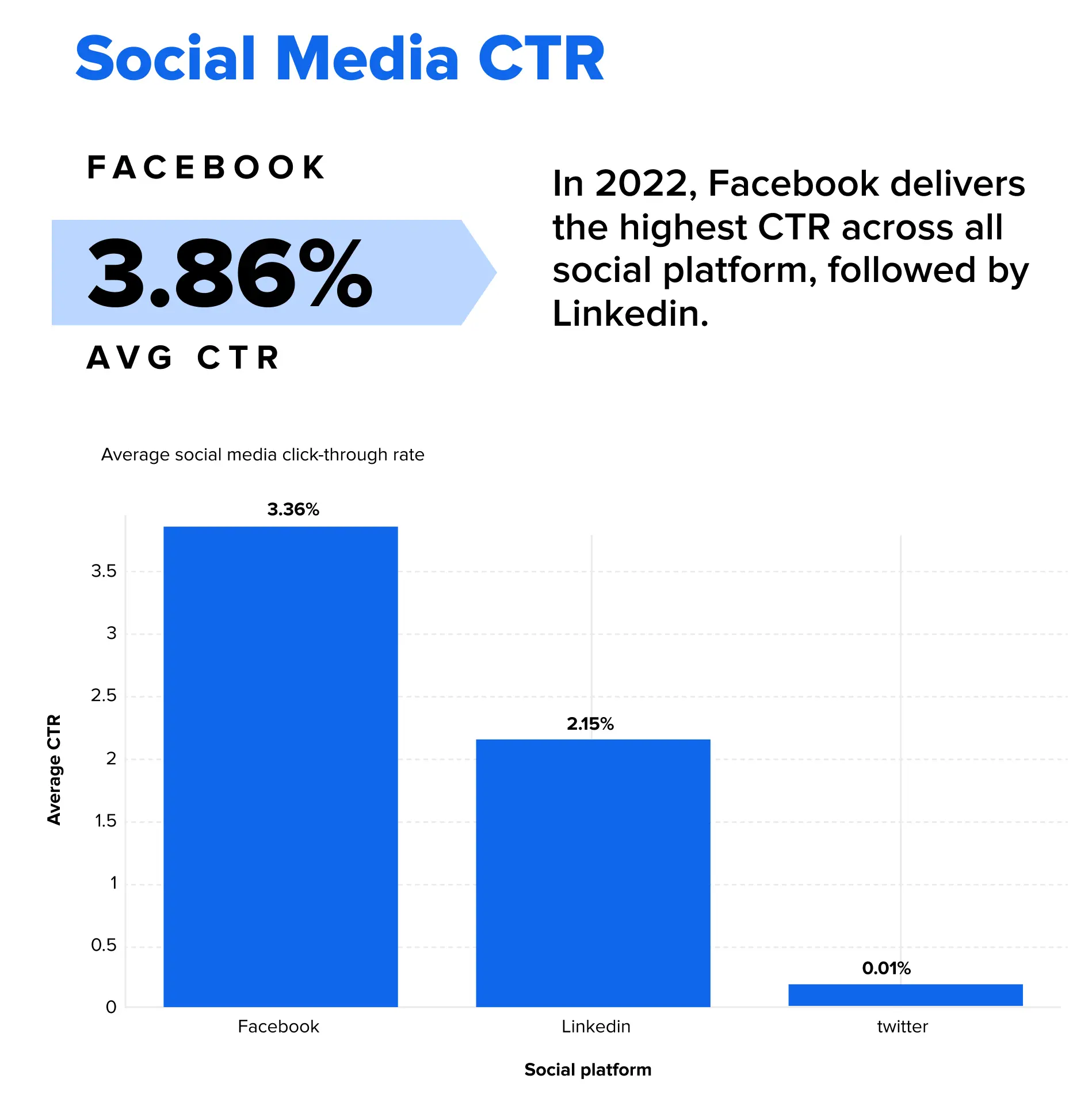More About Click-Through Rate
Social media CTR indicates the percentage of people who click on a post on social media. CTR is a metric that marketers specializing in social media marketing look at while analyzing their paid advertisement campaigns and results.
So, what is CTR? Click-through rate, abbreviated as CTR, is a metric used to gauge the effectiveness of social media posts in registering click-throughs to a specific landing page or website.
You can easily calculate the CTR of any post.
How? Simply divide the number of clicks on the link in the post by the total number of views or impressions the post has secured, and then multiply the number by 100 to obtain a percentage.
Look at the formula below used for calculating CTR for a social media post:

Take, for instance, a post receiving 1,000 impressions/views and 50 clicks on a link inside the post. Then, the click-through rate would be calculated as below:
CTR = (501000 100)% = 5%

A higher CTR is an indicator of a higher number of people viewing the post and engaging with it by clicking on the link or CTA. The higher the CTR, the greater the success of a social media campaign.
However, it is noteworthy that CTR is just one metric, and it must be used in junction with other metrics. Conversion rate and engagement rate are the other metrics that align with CTR to get a comprehensive understanding of how well a social media campaign is performing.
The average CTRs differ across content types and platforms. A LinkedIn content study titled “The Secret Sauce: How LinkedIn Members Engage with Content” revealed that native documents on LinkedIn had the highest CTR compared to other content forms. It was also found that the videos had the highest EPI (engagement per impression) rate.
Below are the findings from another study showing Facebook has the highest CTR among social media platforms.

